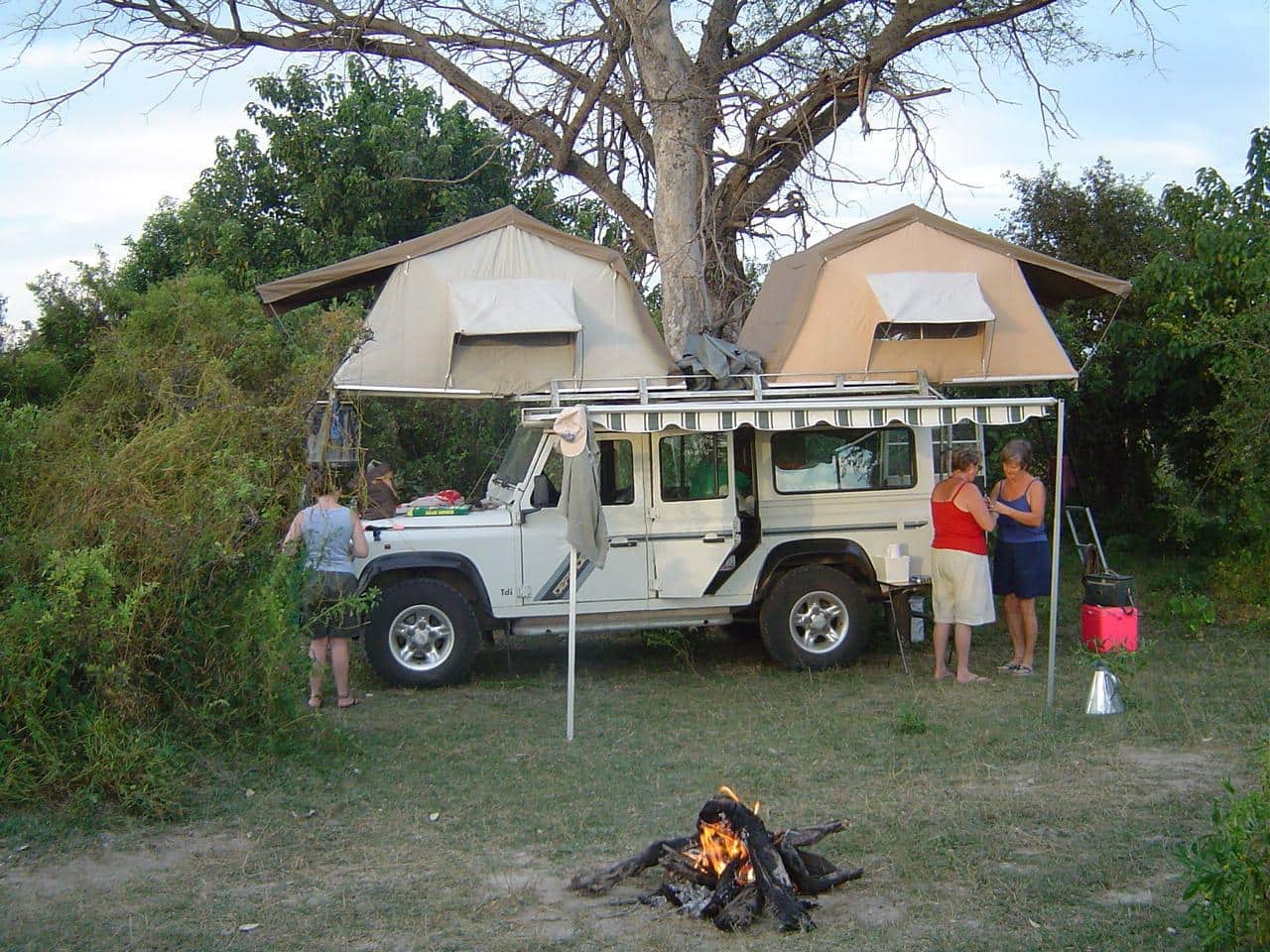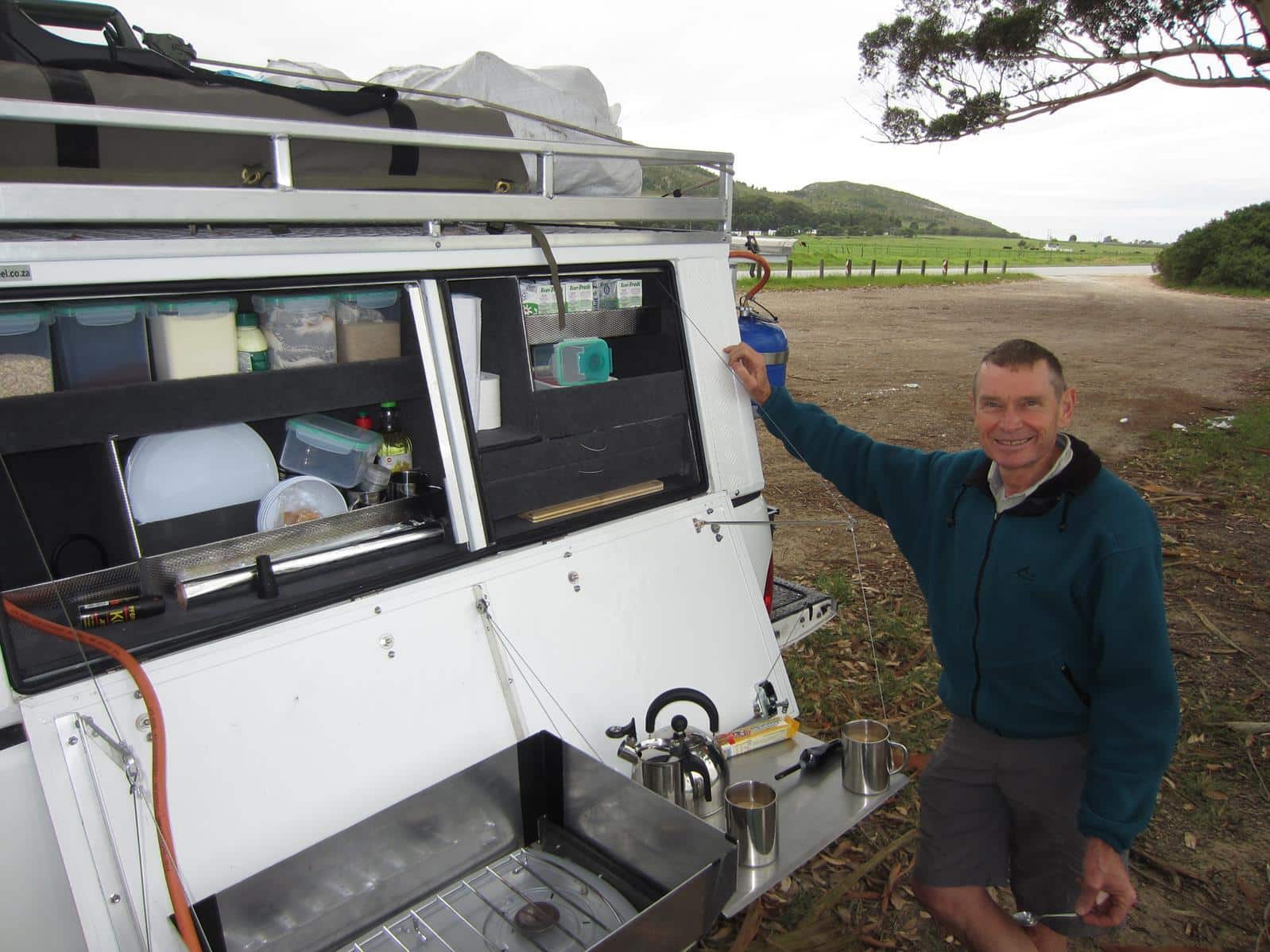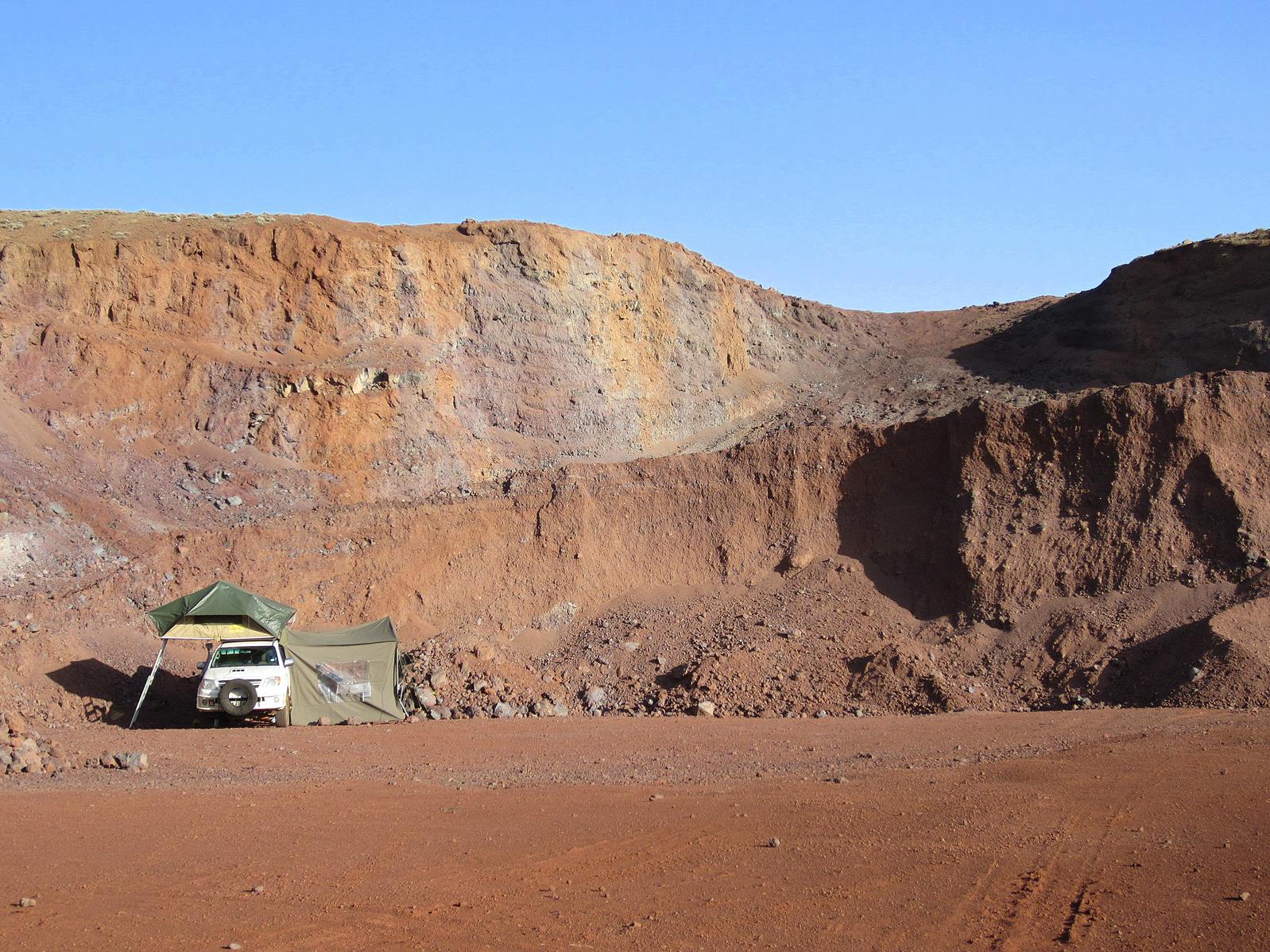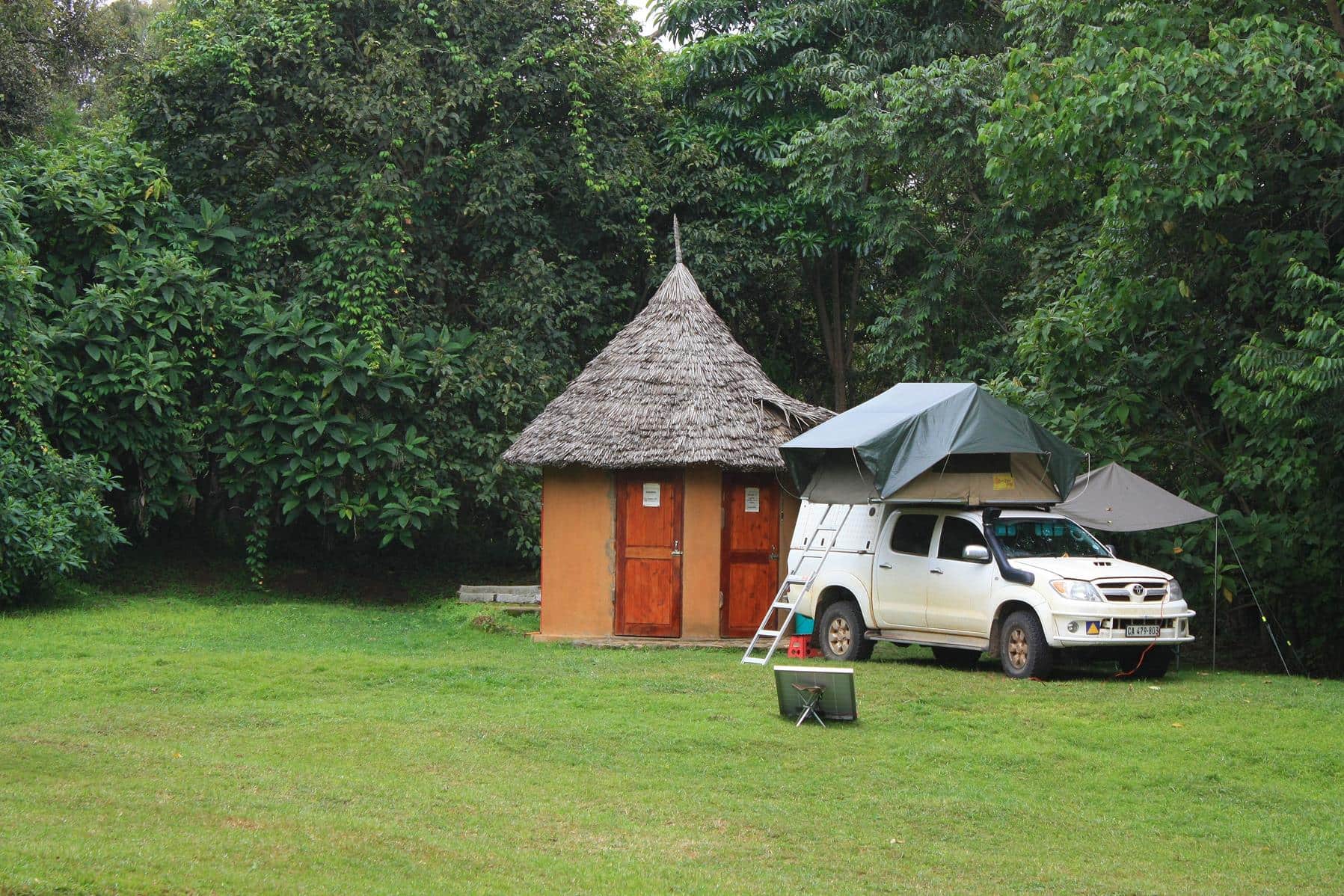By Peter Barber
Your peaceful morning game drive in the cool of the new day was idyllic and your party returns to camp, anticipating their delicious breakfast. By the time that’s over the day warms up and before long you are into another scorcher!
This is the typical pattern for overland travellers in Africa, and on our return from our overland trip to Ethiopia the neighbouring countries of Zambia and Namibia reminded us just how much hotter it can be in Southern Africa than in East Africa. In fact, apart from the our visit to the Danakil Depression, which has the highest average temperatures year round on Earth, nothing compared to the heat in the Caprivi Strip, where even the most sun loving traveller was hunting for shade.
When you camp you are exposed to the elements and the longer your overland trip, the more important it is that you prepare well for shelter. Shade is not the only kind of shelter that an overlander needs. For those who frequently move onwards, shelter must be quick to erect and flexible enough to handle sun, wind and rain. It should cover the cooking, seating and eating area.
Gazebos
When going on your annual holiday where you mostly stay in one or two campsites, a gazebo is ideal. It provides perfect shelter for a seating or cooking area that isn’t directly attached to the vehicle. A gazebo is especially handy if you stay over for a few days and want to enjoy game drives; you don’t have to pack up camp and your campsite is reserved by your gazebo.
For overlanders on the move a gazebo is not ideal. As they ‘stand alone’ due to their outwardly angled pole supports they can never butt up to provide shelter for a built-in kitchen on a vehicle, which most overlanders have. Also, they are costly in terms of packing space and weight.
With an unlimited budget and plenty of packing space in your vehicle it’s possible to travel with a variety of options. However, any overlander knows that space is extremely valuable and that it’s best to think through your needs and select shelter that will provide for most of your needs most of the time. Then you become an expert at setting it up and taking it down, rather than having to struggle to learn to put up a variety of equipment.
Retractable side awnings
One idea is to travel with an awning permanently attached to the side of your vehicle which is quick and easy to erect for your coffee and lunch stops. Self-contained retractable awnings are easy to use but are limited in the cover they afford as the sun often seems to shine from anywhere else but from straight above. So a sheltered area that looked huge in the outdoor store often shrinks when assaulted at different angles by the elements. Some of these awnings do come with zip-on sides for rain protection but in general they don’t seem to withstand strong wind that well, even without the sides attached.

When we prepared for our Ethiopia bound overland trip we gave shelter a lot of thought. We could not find an affordable retractable awning that we were convinced would provide us with sufficient shelter against all the elements. However there are some retractable swing-out awnings on the market that cover the rear and side of your vehicle. These also came with side panels and seemed ideal, but were way above our budget.

Fold-up, zip-away awnings
Finally we bought a fold-up, zip-away canvas awning which we attached to the passenger side of our roof rack and erected it with poles. We realised that we would not use it for quick lunch stops as it took a few minutes to put up. However we usually utilised what shade we could next to the road and where there was none, we used that provided by the open tail gate. Fine at a pinch if there are only two of you!

Admittedly a pull-out awning would have been ideal for these short stops, but that wouldn’t have provided effective shelter from rain which is usually driven by wind and it would have occupied the mounting space needed by the awning we chose in preference.
When a storm blows in, the sun is the last thing you will be worried about. Then you’ll be concerned to keep the wind and icy rain out; and their direction of engagement is more unpredictable than that of the sun.
No awning is ideal for all circumstances but, looking back, ours was perhaps the best multi-purpose shelter we could have chosen. Once erected it extended to the rear of the open tail gate and forward to cover the front passenger door. This shelter was much needed during rain as we stored our clothes boxes on the front seats once we’d set up camp – the driver’s door was sheltered by the open rooftop tent.
Whilst it was about 2.5 metres wide we were at times grateful for the ‘velcro on’ sides that were very effective against wind and rain. It’s surprising just how far wind driven rain will blow, sometimes sending us into the far corners to escape it. Camping up at 4200 metres, with the temperature a very windy one or two degrees below freezing on the Sanetti Plateau in Ethiopia, this was a lifesaver as it was on many other cold and rainy days.

Practicalities
There will be times when the day has been so long and the evening appears so pleasant that you will be tempted not to erect shelter. However, you should keep watching the horizon for storm clouds and lightning as it is unpleasant to have the dinner routine caught up in a deluge, as we had once or twice!
Whatever your choice of shelter, give careful thought to the direction in which you park your vehicle relative to your set up. If it’s just for one night, ideally you want the vehicle body to take the brunt of the elements. If you plan to stay for multiple days then perhaps you are best oriented with the sun rising from the front or rear of the vehicle, so that it never shines in from the side.
Also bear in mind that any shade under canvas is ‘warm’ shade; not the idyllic cool of those tall riverine trees. As the shady campsites are always occupied first and your rooftop tent might anyhow prevent you from camping under trees with low hanging branches, you should be prepared to provide your own shade.

If your overland trip will include arid, desert areas, consider taking along some silver reflective cover sheets which you can tie over any awning you have. One of these is remarkably effective at providing cool shade, albeit not the most attractive facet of your campsite.
A further aspect to consider is dust. Some desert areas experience strong diurnal winds, worst in the evening usually, which may blow up a dust storm. If you stop in such an area, assess the direction of the prevailing wind and try to find a camp spot which is protected by vegetation in the upwind direction. Park you vehicle sideways on to this natural barrier and set up your camp downwind, in the lee of the vehicle body. High density shade cloth erected on poles around the edges of your vehicle can also help prevent dust from swirling and eddying into your living space, food and bed.
The bottom-line is that you have to think through your needs carefully before you set out on your overland trip. A typical trip varies between moving on daily and those times when you have a few days to recover in one place or spend in a park. On your ‘off’ days you will desperately need good shelter. This combination of constant travelling and parking off somewhere for a few days, combined with limited packing space and budget constraints, make finding the ideal solution quite challenging.


Hi, I am having some difficulty sourcing this fold-up zip away canvas awning that you mention. Can you help out please? Very helpful article – we are 2 Australians about to embark on a cross Africa adventure. Have a Hilux 2016 and now trying to fit it out. Thanks!
Never thought of this. Great advice as always. Thank you two.